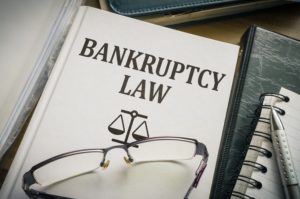 A dispute exists as to whether Section 349(a) empowers bankruptcy courts to enjoin future filings, for grounds other than and beyond the 180 day period provided in Section 109(g). Section 349(a) of the Bankruptcy Code provides:
A dispute exists as to whether Section 349(a) empowers bankruptcy courts to enjoin future filings, for grounds other than and beyond the 180 day period provided in Section 109(g). Section 349(a) of the Bankruptcy Code provides:
Unless the court, for cause, orders otherwise, the dismissal of a case under this title does not bar the discharge, in a later case under this title, of debts that were dischargeable in the case dismissed; nor does the dismissal of a case under this title prejudice the debtor with regard to the filing of a subsequent petition under this title, except as provided in section 109(g) of this title.
Section 109(g) of the Bankruptcy Code, referred to in Section 349(a), provides:
Notwithstanding any other provision of this section, no individual or family farmer may be a debtor under this title who has been a debtor in a case pending under this title at any time in the preceding 180 days if –
(i) the case was dismissed by the court for willful failure of the debtor to abide by orders of the court, or to appear before the court in proper persecution of the case; or
(ii) the debtor requested and obtained the voluntary dismissal of the case following the filing of a request for relief from the automatic stay provided by section 362 of this title.
In In re Freouf, 938 F.2d 1099, 1103 (10th Cir. 1991), the court held that while Section 349(a) “gives bankruptcy courts discretion to determine whether there is cause to dismiss a case with prejudice,” this section “does not deny a debtor all future access to the bankruptcy court, except as provided in Section 109(g),” which contains a 180-day temporal limit. (emphasis in original). The Tenth Circuit went on to conclude that its construction of Section 349(a) precluded use of Section 105(a) to justify a longer prohibition against future filing and stated:
The broad equitable powers that bankruptcy courts have under Section 105(a) may not be exercised in a manner that is inconsistent with the other, more specific provisions of the Code. Consequently, the bankruptcy courts three-year prohibition against filing a bankruptcy case, which plainly contradicts the 180-day limitation set forth in Section 109(g), cannot be sustained under Section 105(a).
An opposite conclusion was reached by the Fourth Circuit in Colonial Auto Ctr. v. Tomlin (In re Tomlin), 105 F.3d 933 (4th Cir. 1997). The Fourth Circuit disagreed with Freouf’s restrictive interpretation of Section 349(a) stating:
Our analysis of the plain language and statutory skein of the statute leads us to conclude that Section 349 was never intended to limit the bankruptcy court’s ability to impose a permanent bar to discharge that would have res judicata effect. Rather, the language of Section 349, as amended, seems to make clear that the court has the power to order such a sanction in circumstances other than those dealt with by new Section 109(g).
Id. at 938. A similar conclusion was reached in In re Casse, 198 F.3d 327 (2d Cir. 1999). Here, the court interpreted Section 349(a) to mean that a debtor may be prejudiced from filing subsequent bankruptcy petitions under two circumstances: (i) if the court, for cause, so orders, or (ii) the terms of Section 109(g) applied to the debtor’s case. Thus, Casse found that so long as the dismissing court finds cause, the bankruptcy action may be dismissed with prejudice for 180 days, or more, without violating the terms of Section 349(a) or, for that matter, Section109(g).
A similar conclusion was reached in In re Bell, 125 Fed.Appx. 54 (7th Cir. 2005). In this case, the bankruptcy court found that the debtors had filed their Chapter 13 case in bad faith. This conclusion was established by the fact that the debtors had filed ten petitions previously, and following a modification of the automatic stay in the ninth case, announced their intention to file another petition. In this situation, the court found no problem with the fact that the debtors were barred from filing a new petition for a period of 365-days.
In re Class A Properties Five, LLC, 600 B.R. 27 (Bankr. N.D.Ill. 2019) also disagreed with the conclusion in Freouf. The court stated that Section 349(a) has at first a gating criterion, that the court, for cause, may order otherwise. Therefore, the bankruptcy court has the power under Sections 105 and 349 to permanently bar debtors who file serial bankruptcies. The court stated that Freouf contravenes the express language of Section 349 which should be read as follows: (a) unless the court, for cause, orders otherwise, the dismissal of a case under this title does not bar the discharge, in a later case under this title, of debts that were dischargeable in the case dismissed; and (b) unless the court, for cause, orders otherwise, the dismissal of a case under this title prejudice the debtor with regard to the filing of a subsequent petition under this title. Id. at 37.
Class A Properties continued and stated that the Freouf interpretation of Section 349(a) would limit the relief available under Section 349, a general provision applicable to all debtors, to that available under Section 109(g), a section applicable pursuant to its terms only to individuals and family farmers. “If Congress had wanted to bind corporate debtors to the eligibility limitations outlined in section 109(g), the words “debtor” or “person” would have been used instead.” Id. at 38. Other courts following the logic of Class A Properties are In re Weaver, 222 B.R. 521, 523 (Bankr. E.D.Va. 1998) (dismissal of Chapter 7 case with prejudice and precluding debtor from filing another bankruptcy for a period of 12 months); In re Robertson, 206 B.R. 826, 830-31 (Bankr. E.D.Va. 1996) (417 day bar imposed); In re Peia, 204 B.R. 310, 311, 315 (Bankr. D.Conn. 1996); In re Robinson, 198 B.R. 1017, 1022-23 (Bankr. N.D.Ga. 1996); and In re Herrera, 194 B.R. 178, 189-90 (Bankr. N.D.Ill. 1996).
Matthew T. Gensburg
[email protected]

